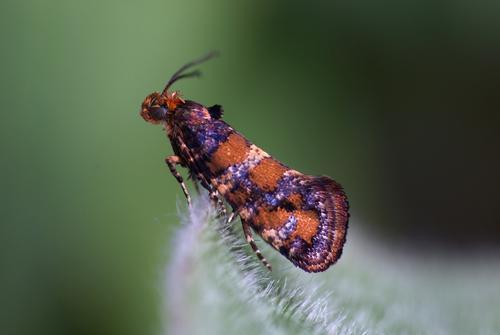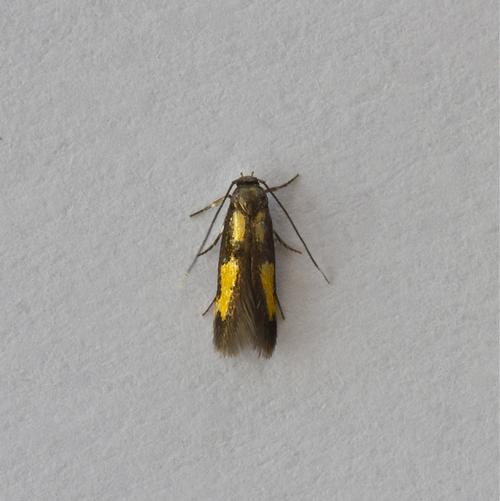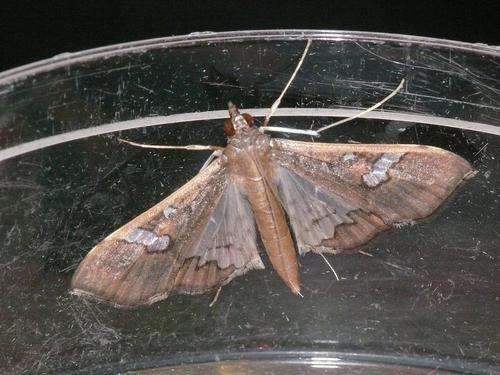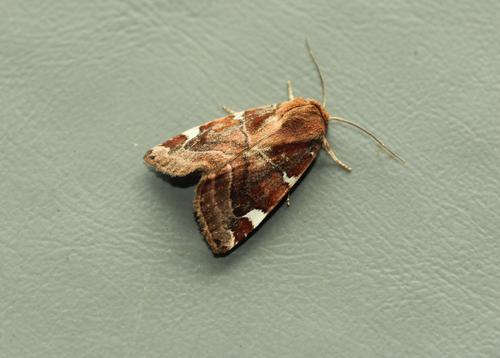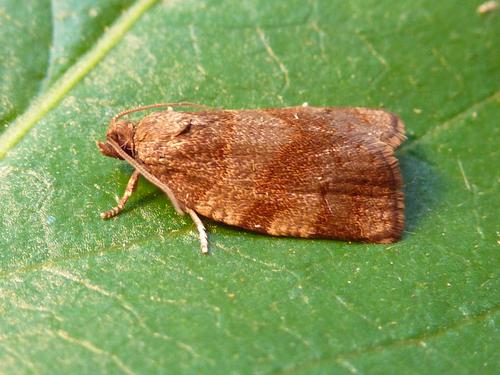Moths in Worcestershire VC37 in 2012
Tony Simpson
Last year’s extremely wet cool summer resulted in a marked decrease in the numbers of most moth species. In the autumn it was noticeable how very few leaf-miners were to be found, even of the usually very common species. Many species seemed to be absent and populations of most moths seem to have crashed. Hopefully parasite numbers will have become low as well and next year’s survivors will have a better chance of achieving a population recovery.
There have been no new Macros, but four new Micromoth species:
Oliver Wadsworth bred two Digitivalva perlepidella (Fig. 1.) from Ploughman’s Spikenard, found at Broadway Quarry on 8/5/12.
Ken Willets had a Chrysoclista lathamella (Fig, 2.) in his garden at Eastham on 23/6/12; a very pretty orange and black moth whose larva feeds under the bark of Willow species and is rarely recorded in the U.K.
Dave Grundy had a Mung Moth Maruca vitrata (Fig. 3.) at light in Sparkbrook on 9/8/12. This was probably an adventive record, having been brought into the “Curry District” of Birmingham on tropical legumes.
I caught seven small grey Cnephasias (Tortricidae) at light at Bransford between 16/7/12 and 2/8/12 and dissections over the winter showed them to be Cnephasia pumicana, a recently recognised species which has been spreading from the southern counties. It is polyphagous on herbaceous plants and has become a pest species on cereals and grasses on the continent.
September Thorn had a good year with small numbers regularly coming to light from July into the early autumn.
A single Pine Hawk Moth was found by M. Crookston in Evesham on 9/7/12
White-spotted Pinion (Fig. 4.) was found at its only known West Midland site again this year (B. Harley).
The Small Ranunculus continues to spread southwards in Worcestershire with singletons at light in Stourport (C. Price 1/7/12) and Bransford (2/7/12 (Tony Simpson) and larvae on Prickly Lettuce at Diglis in Worcester (Oliver Wadsworth 3/8/12).
I found larval feedings of Lampronia capitella in Red Currant at two sites on the Worcestershire side of the Dowles Brook in the Wyre Forest (last recorded Worcester 1877): I also recorded three specimens of the rare Tortrix, Choristoneura diversana (Fig. 5.), from Slade Wood on 7/7/12 (last recorded Worcester area 1882).
Caloptilia cuculipennella had its second and third county records at Arely Wood 18/8/12 (Tony Simpson) and Upper Rochford 3/8/12 (D. Arnold).
There were very few migrants, with only moderate numbers of Silver Y, and a few Diamond-back Moths and Rush Veneers. I saw a Gem at light at Bransford on 24/10/12.
Image
Fig. 1. Digitivalva perlepidella. Oliver Wadsworth
Fig. 2. Chrysoclista lathamella. Ken Willets
Fig. 3. Mung Moth Maruca vitrata. Dave Grundy.
Fig. 4. White-spotted Pinion. Brian Harley
Fig. 5. Choristoneura diversana. Tony Simpson
